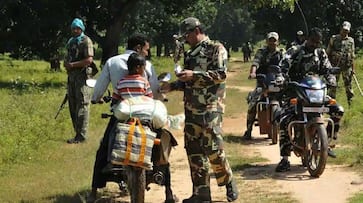Chhattisgarh is all set for its two-phase Assembly elections 2018. The first phase will be held on November 12 and the second phase will be held on November 20
New Delhi: Voting in India’s fourth-newest state Chhattisgarh has already started amid Naxal attacks. The polls are the first among four other states—Madhya Pradesh, Rajasthan, Telangana and Mizoram. Of these, MP, Chhattisgarh and Rajasthan are ruled by BJP, which is why these elections are being seen as a semifinal for the 2019 Lok Sabha polls.
The Raman Singh government has been in power for three consecutive terms and is seeking a fourth mandate. The Congress is hoping to make a comeback and recapture power claiming huge anti-incumbency.
Former Chief Minister Ajit Jogi's new party is also in the fray, in alliance with Mayawati's Bahujan Samaj Party. The Congress, which failed to seal a deal with the Dalit powerhouse, fears the combination will dent its chances.
The Ajit Jogi-led Janta Congress Chhattisgarh party, which is expected to dent the Congress voter base, especially in terms of caste, has been wooing tribals by offering farm loans waivers and jobs for local youths.
We look at some of the game-changing factors which will affect the government formation in the state which was carved out of Madhya Pradesh in 2000.
Mining the backbone of the economy
The state is also one of India's fastest growing states, averaging 9.88% annually over the last six years, mainly because of its rich mineral base. Minerals have been the bedrock of Chhattisgarh, contributing a tenth to the state's GDP. The revenue from mineral mining in 2017-18 stood at Rs 4,911 crore. The state is one of India’s largest producer of coal, iron ore, tin and has significant reserves of dolomite, limestone, bauxite, and diamonds.

Agriculture not so productive
Though nearly 80% of its population depends on agriculture as the main source of livelihood, agriculture contributes merely 18% to the state’s GDP. One of the biggest hurdle is that majority of farmers still use traditional farming methods and rely on monsoons, resulting in low growth and crop productivity.
Chhattisgarh is known as the "rice bowl of India" with 81% of the sown area is under the foodgrain. But the yields remain dismal and much lower than the country’s average.

Human Development and Chhattisgarh
Though the state has shown a significant growth on economic factors, when it comes to human development—what United Nations calls advancing human well-being—Chhattisgarh is the sixth worst state.
The Human Development score is a combination of income, life expectancy, health, and education.

Unemployment
Unemployment is a key issue of concern as more jobs and steady income for people can be key to Chhattisgarh’s Naxalism problem.
But despite the government’s efforts, the state’s unemployment rate is the sixth highest in the country till October 2018.

Naxal extremism incidents
The presence of extremism in the state has also hurt growth and is the reason why living standards are below average and therefore, it is called the hub of India's red corridor—the belt of states that witness the most Naxalite or Maoist insurgency.
Despite Centre’s efforts and increased capacity of security forces in the area has led to a 5.6% decline in violent incidents, according to the Home Ministry.

Last Updated Nov 15, 2018, 12:20 PM IST









![Salman Khan sets stage on fire for Anant Ambani, Radhika Merchant pre-wedding festivities [WATCH] ATG](https://static-gi.asianetnews.com/images/01hr1hh8y86gvb4kbqgnyhc0w0/whatsapp-image-2024-03-03-at-12-24-37-pm_100x60xt.jpg)
![Pregnant Deepika Padukone dances with Ranveer Singh at Anant Ambani, Radhika Merchant pre-wedding bash [WATCH] ATG](https://static-gi.asianetnews.com/images/01hr1ffyd3nzqzgm6ba0k87vr8/whatsapp-image-2024-03-03-at-11-45-35-am_100x60xt.jpg)


